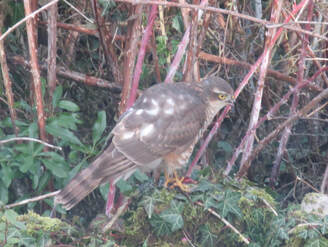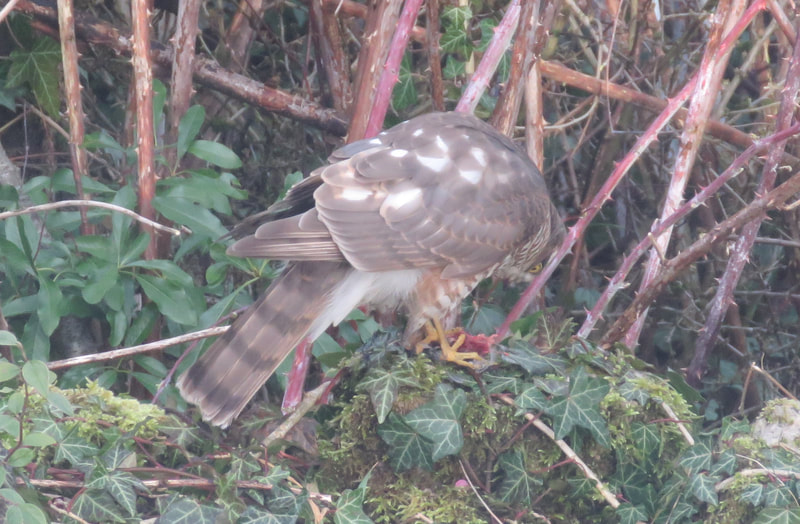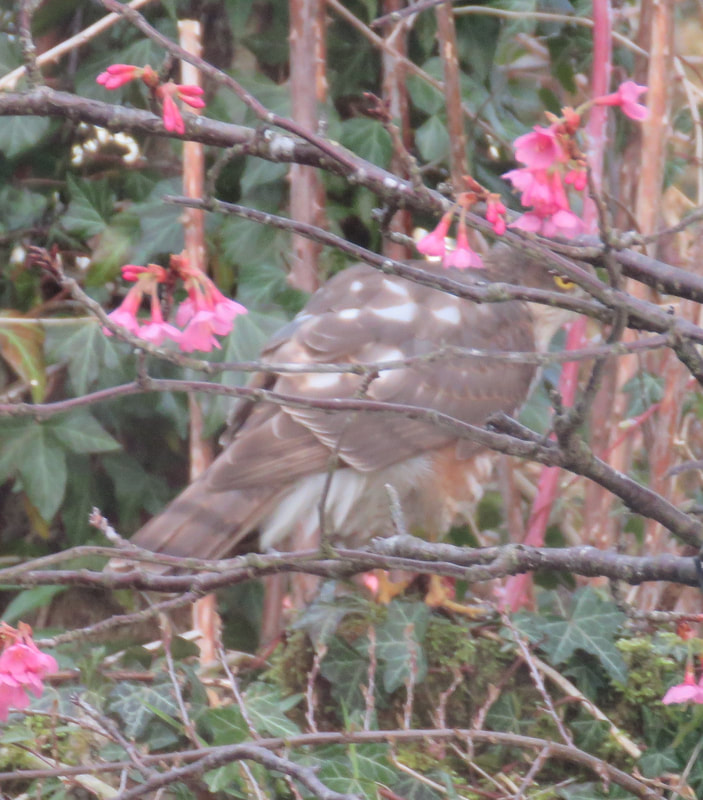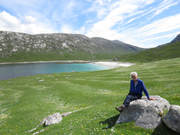 Sparrowhawk
Sparrowhawk Sparrowhawk have bred nearby in recent years but this is the first time one has killed on the bird- feeders. I wonder how often we miss the drama of the day, through lack of coincidence, by simply not looking. One late summer a family sat in the top of a conifer throughout heavy rain and I watched them daily through my telescope.
That white supercilium is distinctive, and the shortish wing secondaries. Sparrowhawk plumage-colouring changes as the bird matures. As does eye colour. Young birds have pale yellow irises, to brighter yellow, to orange with age. Poring over sparrowhawk images (airy snowflakes float by the window) that slash of white supercilium makes a connection. It gives the hawk a disdainful, sneery look. Supercilious. Latin can be fun - the supercilious raised eye-brow.
Was my bird a juvenile, a first year bird? I was puzzled by those white splotches on the sparrowhawk's mantle, so consulted friends in Bristol Ornithological Club whose expertise is trusted. Thanks to Jeff Holmes for the following:
Three characteristics which should guide the identity are
1, The upper feathers are edged with a rufous colour, a feature with many juvenile birds have until they moult or wear off.
2, Eye colour in a juvenile bird is a bright yellow, gradually turning to orange with adults.
3, Chest and under-barring again show much rufous colour.
The pale patches and spots have nothing to do with age. In fact, adult males can have extensive white patches which show well against the slate grey colour of their plumage. It is a variation in plumage.










 RSS Feed
RSS Feed